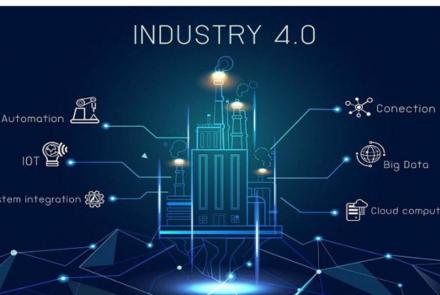TRANSFORMATION FROM BUSINESS INTELLIGENCE TO KNOWLEDGE-MANAGED COMPANIES
“People … act on their ideals and prejudices. But if you can remove the influence of both and replace it with data, you have got a clear advantage.”
Every business faces its particular demanding situations in daily life. Perhaps the max critical problem for production enterprises is to plan the necessary raw materials to continue production, to achieve efficiency by reducing costs in production, while for service enterprises to manage their projects and resources efficiently. For Buy-Sell businesses, the most important problem may be planning a promotion by looking at the inventory turnover rates, planning the inventory needs, tracking the targets of the customer representatives instantly, and increasing the decreasing sales in possible cases. In any case,making plan for the future, surviving and growing in tough competitive conditions requires being a company managed with knowledge.

So, what does it mean to be a knowledge-driven company?
The solution to this question, we first need to clearly understand the difference between data and information. When we research the word meaning of data in the Turkish Language Association, we come upon many unique definitions: We can summarize it as "the name given to the events, relationships and numerical raw information necessary to draw conclusions, make inferences, or continue an investigation". Knowledge is the meaning that someone directs to data by making use of the conventional rules used in information processing is described as. In other words, information is obtained from the transformation of data arising from operational or commercial movements for companies, by consolidating them in a meaningful and decision-making way. It is indisputable that data collection has become much easier today. So much so that, we are talking about big data, not data accumulated in many different sources.
We are in a duration in which standards consisting of Industry 4.0, Internet of Things, Artificial Intelligence etc. have settled in our daily language. However, when we look at real life, we see that many companies still cannot go beyond reporting on excel sheets. In many businesses, each department prepares its own reports, and when the goal is to create a consolidated report, the job is completely deadlocked. For most establishment, it is a fact that can easily be accepted by everyone that the data for the first 6 months can only be reported and therefore evaluated in the 9th month.
Can a company that can only be assessed after 3 months become a company managed with knowledge?
When we examine all companies, whether large, medium, or small, we see that the maximum primary device of reporting remains Excel, which consists of thousands of rows and pages. There are either reporting units or certain persons responsible for reporting within the company, and the management must wait for reports from these units or persons to examine the reports.
In a business enterprise where managers must access up-to-date data without being dependent on certain people, it cannot be expected that records are not processed instantly, and employees are not aware that they are being audited. On the contrary, in an enterprise where sales reports are prepared by the sales department, can the lowering income trend or unattainable income targets be noticed before it's too late? Can a financial bottleneck be foreseen if financial data is not entered into the system on time?
What needs to be done to become a knowledge-managed company?
“For information to be useful in the managerial decision-making process, the right information (not too much, not too little) need to be presented at the right time and in the right format to contribute to the decision to be taken.” [2]
First, it ought to be cautiously tested on which basic indicators the managers make decisions. If those simple signs are not clearly defined yet, the fundamentals indicators of the company should be determined with the participation of all units. After this stage, the information needed by the managers will be clarified. The point to be considered here is not to allow information pollution. Making numerous reports is not a success, reports that contain meaningful and summary information and that can be easily interpreted by managers should be designed.
The second stage of the examination is from which data sources and how often the required information can be obtained. In an environment where the interpretation of daily financial data is required, if there is a situation such as delayed entry of data into the system, first, those problems ought to be identified, and it should be clarified how to overcome them. If necessary, decisions that will lead to changes in the organizational structure should be able to be taken.

Another important issue is to determine if there are situations where data is flowing but not consolidated in a database. As an example, let us consider a company that distributes to the retail industry and regularly streams weekly sales data. If these data cannot be consolidated in a database due to technical inadequacy and cannot be stored with a healthy table structure, then processing these data and extracting meaningful information will be a slow and laborious process.
One of the most important points is to determine whether to standardize data entry in existing ERP or different applications. Perhaps emerging needs may also lead to the need to develop ERP and to record more data. In this case, one of the key issues lies in how open and flexible the ERP the company uses.
As a result:
As can be understood from the items above, which we have attempted to summarize, the business intelligence project should also be perceived and carried out as the first step of a corporate transformation project. Business intelligence is not by itself starting to use a single software or putting a system into practice. Beyond all this, it is a process that will transform the business and its effects will be felt in a much longer term. The needs that will arise from this will create a transformation in both information processing and organizational structure.
Şirin Gürkan Aral







